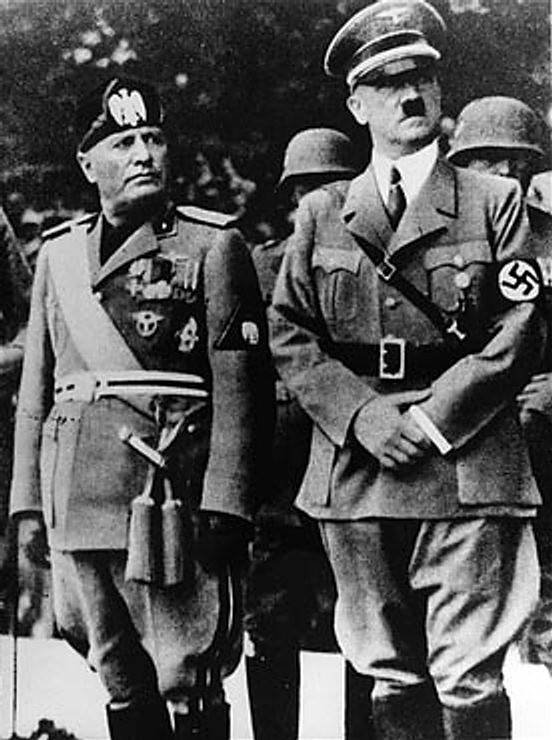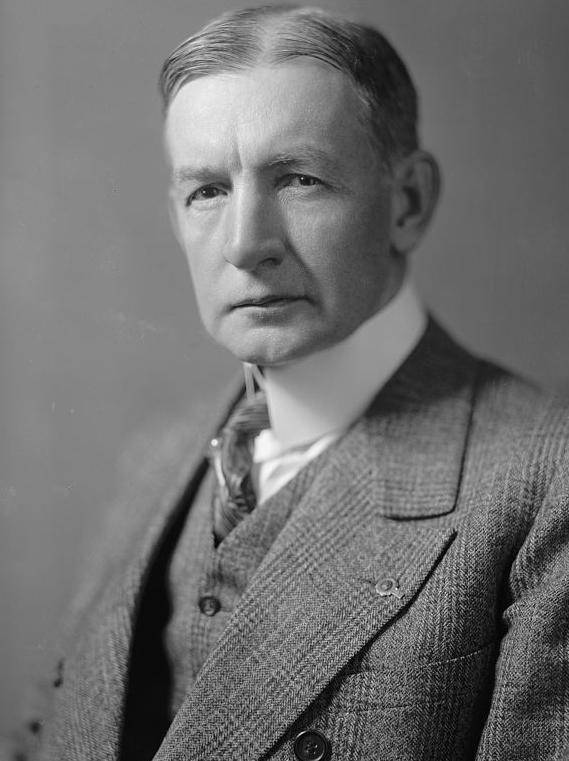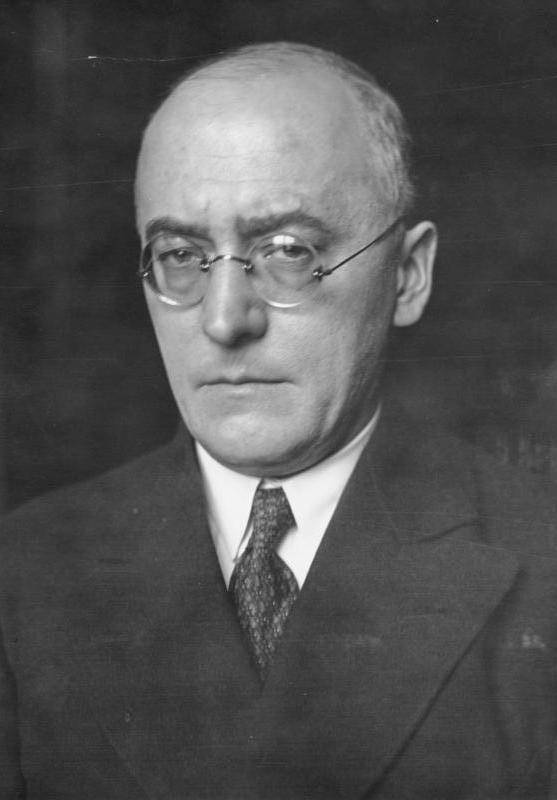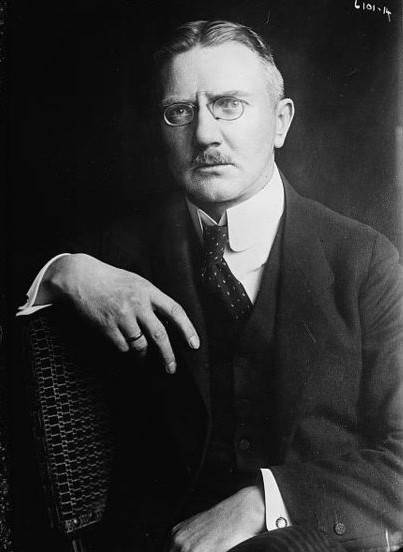On the preparation of the American capital of World War II

In November 1918, the First World War ended, but it could not lead to a complete "modernization" of the world, which the world "financial international" started. The main task of the First World War was the fundamental reorganization of Europe and Russia: the elimination of monarchical empires - German, Austro-Hungarian, Ottoman and Russian, the spread of republican forms of government (modeled on France and the United States).
Interestingly, some thinkers of that time understood this, as in 1910, Russian political scientist N.N. Beklemishev in his work "Invisible Empire", it was devoted to aspects of the European financial capital, noted that the former exploitation of countries and peoples associated with the monarchical form of government, has become "consignment note". It led to a drop in profits, due to the growth of the “appetites” of the courts, the bureaucracy and other factors.
But after the fragmentation of empires and the creation of weaker, smaller states, the "New World Order" under the auspices of the United States did not come out. The objectives of the European and American clans diverged, the Europeans did not want complete US domination in the world.
Therefore, immediately after the end of the First World War, preparations began for another world war, which was to establish the American world order on the planet. The Americans paid close attention to other large countries that were dissatisfied with the outcome of the war — Germany, Italy, the USSR, and Japan. So, January 15 1920, the commander of the American forces in Germany, General G. Allen, made in his diary a record that Germany is the country that is most capable of successfully fighting Bolshevism. In addition, the war and the expansion at the expense of Russia for a long time distracted the Germans to the East. Therefore, a strong and at the same time financially dependent on the Americans, Germany was to become the main military force of the United States in Europe.
The Americans believed that the Pacific Ocean is their zone of influence, so it was necessary to weaken the main competitors - the UK and Japan. At the Washington Conference 1921 — 1922, the Americans forced the British to dissolve the Anglo-Japanese alliance 1902 of the year. Thus, they became the leader of the APR, since separately Japan and the British Empire were inferior to the United States.
In Italy, in 1922, Mussolini came to power, who began to pursue a policy of hostility to the British and French in the Mediterranean region and in Africa.
At the same time, the conquest of Germany began, there they relied on the National Socialist Workers Party of Germany, which was not yet known in the world, headed by Adolf Hitler. As Hitler's biographer I. Fest pointed out precisely from 1922, the Fuhrer begins funding from various kinds of anonymous sources in countries such as Czechoslovakia, Sweden, and especially Switzerland. According to him, in the fall of 1923, on the eve of the famous “beer putsch”, Hitler traveled to Zurich and returned from there, in his own words, with a suitcase of money. True, the Italian fascists did not succeed in repeating the "blitzkrieg", but the party declared itself in Germany.
The American financial capital also had very strong positions in the USSR; it suffices to recall the position of Trotsky, who almost became the new leader of the USSR, after Lenin’s death. Less significant figures were even more.
The main purpose of the United States in Europe was Germany. Realizing that in order to achieve complete success, it was necessary to strengthen its financial and economic influence, the Americans decided to bring the British to the financial colonization of Germany in order to undermine the position of the French - Paris did not want to restore the economic power of Berlin. France did not need a competitor in Europe. Economic penetration eased the difficult post-war situation of the German economy, especially heavy industry, for which foreign markets were closed, and the country was deprived of its few colonies.
Dawes Plan
In January 1923, the French, under the pretext of stopping Germany from paying reparations, sent troops to the Rhineland, establishing control over the Ruhr industrial area. A crisis situation developed in the Weimar Republic — the economy was even more disorganized, hyperinflation began, and mass riots ceased in the uprisings led by the communists. At the same time, London and Washington carried out diplomatic pressure on Paris, demanding the withdrawal of troops.
In order to stabilize the situation in April 1924, an American entrepreneur, General Charles Dawes, put forward a number of proposals, which were called the “Dawes Plan”. They established a new procedure for Germany to pay reparations, their size was adjusted to the economic possibilities of the Weimar Republic - in 1924, Berlin had to pay reparations in the amount of 1 billion gold marks, and by 1928, the amount of payments was planned to be increased to 2,5 billion. stamps. And to launch the work of the German economy, the country was granted an international loan. Paris had to withdraw troops to 31 July 1925 of the year, this put an end to the French’s dreams of leading Europe and weak Germany.
The agreement was signed in August 1924 at the London Conference. This allowed the German economy to recover. Thus, in the 1924-1929 years, Berlin received, according to the Dawes Plan, from the United States - 2,5 billion dollars, from the UK - 1,5 billion dollars. It was a huge amount in those times, for example: the 1 dollar of that time corresponded to approximately 100 dollars in 1999, that is, at the rate of 1999, Germany received approximately 400 billion dollars. The Germans were able to almost completely modernize the material base of industry, creating the basis for future militarization. One of the authors and performers of the Dawes Plan, the German banker Schacht, summing up the results of this plan in 1929, noted with satisfaction that Berlin received as many foreign loans in 5 years as America received in 40 years that preceded the First World War . By 1929, Germany overtook England in industrial production - having reached the level of 12% of global production.
In 1929, US investments in Weimar Germany accounted for up to 70% of all foreign investment, and moreover, a significant portion of them was made by the Morgan financial group. In fact, American financial-industrial clans (with the participation of British colleagues) restored the German economy, without them Hitler's coming to power and the beginning of the war would have been impossible, moreover, they gained control of a significant part of the German economy. For example: owned by the Rockefeller Standard Oil clan, controlled the entire German oil refining industry and the production of synthetic gasoline from coal. Henry Ford controlled all 100% of Volkswagen shares. Clan Morgan owned the entire German chemical industry in the person of the corporation "I.G. Farbenidustri. The Morgans owned the American telecommunications company ITT, through it they controlled 40% of the telephone network of the German state and up to a third of the shares of the aircraft manufacturing company Focke-Wulf. In addition, Morgan, through General Electric, controlled the German radio and electrical industries represented by the German companies AEG, Siemens, Osram. Through General Motors, Morgan’s house controlled the Opel automobile concern. The financial capital of the United States controlled such key banks as Deutsche Bank, Dresdner Bank, Donat Bank, and others. Thus, before Hitler came to power, the United States controlled key sectors of the German economy and its finances.

Charles Gates Dawes (1865 - 1951), US statesman, entrepreneur and military.
Locarno Treaties of the Year 1925
In October, an international conference was held in Locarno, Switzerland. In the course of it, the international isolation of Germany was broken, and the position of France was weakened. In exchange for additional political and legal security guarantees, Paris actually renounced its influence in Eastern Europe in favor of Berlin. Countries so-called. The “Little Entente” - Poland, Romania, Czechoslovakia, Yugoslavia, and Greece were open to Germany, and, therefore, the United States. For example, the military alliance of France and Poland (1921 of the year) actually lost its force. Berlin began to open the way to the east, only the western borders were declared unshakable, and Germany did not give guarantees regarding the eastern borders.
The rise of the USSR and Germany
Russia began to recover, as a world power. This was said by many data. There was a process of defeating the "fifth column" in the Soviet Union. There were no positive results from diplomatic and informational pressure on Moscow, such as the assault by the Chinese police in Beijing at the Soviet embassy in April 1927, then several of our diplomats were killed, or when the Soviet ambassador Vojkov was killed at Warsaw in June 7 (after which Poland received a loan USA for military needs). The growth of the military, industrial power of the Union.
Therefore, the United States began to strengthen the support of Hitler and his party. From the end of 1926, after it became clear that the Trotsky-Zinoviev block was defeated and it was decided to industrialize (by the XV Congress of the CPSU (b)), that is, the USSR became an industrialized, self-sufficient power, to Adolf Hitler again begins to receive a financial flow from various sources within Germany and abroad. Since the end of 1928, when the first five-year plan begins in the Soviet Union, and at the end of 1929, the last agents of influence of the “financial international” led by Bukharin (the so-called “right opposition”) were removed from the Soviet top political leadership financing of Hitler and his party. Now the main financing went through German banks and concerns.
In the spring of 1930 in Weimar Germany, a coalition government led by Social Democrat G. Muller was removed from power. He was replaced by the government of G. Brüning, which consisted only of members of right-wing parties. Thus, the reign of the Social Democrats in Germany of the 1918-1930 years was completed. The process of gradual curtailment of bourgeois democracy, the so-called. “The period of presidential governments” 1930-1933's.

Heinrich Bruening.
In July 1930, the Reich Chancellor Heinrich Bruening dismissed the Reichstag, although his powers expired only in the 1932 year. This step was made in order to use public discontent with the economic crisis and turn the NSDAP into a large parliamentary party. And so it happened, in the 14 of September 1930, the new elections to the Reichstag of the Weimar Republic, the Nazis received 6,8 million votes (in the previous elections 1928 of the year they received 800 thousand votes) and 107 parliamentary seats (1928 of the year received only 12 seats ). The British and American press praised the success of the German Nazis.
In the autumn of 1930, the chairman of the Reichsbank of the Weimar Republic, Jalmar Schacht, visited the United States. He discussed with his American colleagues the details of the future coming to power of Adolf Hitler. In October, 1931, in the city of Harzburg, a meeting of prominent German bankers and industrialists, together with representatives of the highest aristocracy and generals, was held. At the meeting attended and Hitler. J. Schacht brought to the attention of all those present the opinion of Americans about the need to establish a Nazi dictatorship in Germany.
Further events in the USSR only confirmed the correctness of the chosen course: the first Soviet five-year plan did not fail, as they had expected in the West. And if in 1928, the Union imported up to 81% of industrial equipment and engineering products - mainly from the USA, Germany and England, then in 1931, this figure fell to 17,8%.
At the end of May 1932, under the pressure of German financial-industrial, aristocratic circles - so-called. Club of Gentlemen, the government of Bruening resigned. The next government, Franz von Papen, was also temporary and set the stage for Hitler's arrival. In November 1932 of the year 17 of the largest German financiers and industrialists sent a letter to President von Hindenburg (Reich President of the Weimar Republic from 1925 to 1934 years) demanding that Reichskanzler be appointed Adolf Hitler.
In early January, 1933, a regular meeting of German financiers was held at the estate of the banker Schroeder near Cologne, where the final decision was made - to bring Hitler to power within a few months. This was done at the end of January 1933.

Yalmar Schacht
Japan
“Financial International” not only created a hotbed of war in Europe - in Italy and Germany, but also in the East, supporting the Japanese’s policy of militarization and aggression against neighboring peoples.
Initially, the Americans limited Japan’s influence: after World War I, the United States broke off the Japanese-British alliance and forced them to leave China and the Russian Far East. The United States supported a nationalist government led by Chiang Kai-shek in China, but they soon became disillusioned with it. The Kuomintang failed to suppress the Chinese communist movement and the feudal generals. The crushing defeat of Chiang Kai-shek's Chinese troops in Manchuria by the forces of the Soviet Far Eastern Army in November-December 1929 showed the US the impossibility of using the nationalist regime as a weighty tool for external armed pressure on the Soviet Union in the Far East.
In the Far East, a force was needed that would hold back the growth of the military and economic power of the USSR and bring order to China. The choice fell on the Japanese Empire. Japan needed markets for its products and sources of raw materials (it was in China) and capital for the development of industry (this could help the US). The US position in the upcoming war of Japan against China was formulated by American President Herbert Clark Hoover (from 1929 to 1933). In his opinion, the Chinese government cannot ensure order on its territory, many regions are controlled by the Communists, who are oriented toward the USSR, and the management of Manchuria leads an independent policy. Anarchy reigns in the Chinese "territory, which is completely unacceptable."
The United States believed that the Japanese invasion of Northeast China would increase the dependence of the Chiang Kai-shek regime on the Americans and eventually lead to a war between the Japanese Empire and the Soviet Union.
In 1930, Washington pushed the Japanese to foreign expansion: in June, the United States increased customs duties on Japanese goods by 23% and thus virtually completely closed its market for the Japanese. Japanese exports of goods collapsed immediately by 40%. Financial dependence on the United States and the need to look for other markets for their products forced the Japanese government to seize Manchuria. When the Japanese invaded Manchuria in September 1931, the Americans pressured Chiang Kai-shek and he ordered the troops to withdraw without a fight. During this aggression (over one and a half years), the USA rendered Japan assistance for 182 million dollars.
In fact, Japan’s foreign policy was agreed with the Americans: in 1933, by order from Washington, Japan and Germany withdrew from the League of Nations. In 1937, with the consent of the United States, the Japanese Empire begins a new war in China. The main goal of this war is to undermine the position of Britain and France in China, expanding the influence of the Americans, expand the springboard for the war with the USSR.
In order to divert Moscow’s attention from the events taking place around Czechoslovakia, the Japanese, in July-August, 1938, by order of the United States, organized a provocation at Lake Hassan. A year later, the Japanese staged a war in Mongolia - the events of Halkin-Gol. By this, the USSR distracted from the invasion of Germany into Poland and forced to accept the offer of Berlin on the non-aggression pact, to transfer additional troops, equipment to the East, weakening the defenses on the western borders.
The United States generously funded the Japanese empire to bind the forces of the Soviet Union in the Far East. So, only in 1938, the Morgan financial group provided Tokyo loans for 125 million dollars. And the total US aid to Japan in 1937-1939 amounted to 511 million dollars.
In this way, American financial and industrial circles created on the planet two centers of future world slaughter - in Europe (Germany and Italy) and in Asia (Japan). These countries were to become and became "cannon fodder" in the construction of the "New World Order" of the USA.
Sources of:
Avarin V. Ya. Fight for the Pacific Ocean. Japanese-American contradictions. M., 1952.
History World War II 1939-1945's. in 12 volumes. Tom 1. M., 1973.
Old Men N. Who made Hitler attack Stalin. SPb., 2008.
Marushkin B.I. The American policy of "non-intervention" and Japanese aggression in China 1937 — 1939. M., 1957.
Shambarov V. Anti-Soviet. M., 2011.
Shearer, W. The rise and fall of the Third Reich. M., 2009.
Epperson R. The Invisible Hand. SPb., 1999.
http://militera.lib.ru/bio/fest_j01/index.html
Behind the Scenes of Nuremberg 2 / 2 [The X-Files]
Information